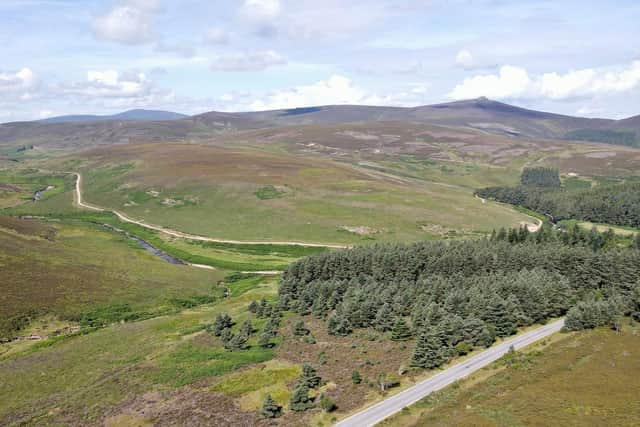Surge in tree planting in Scottish countryside as land owners chase carbon gold
Land owners and investors are now rushing to lodge development plans in Scotland with the UK Woodland Carbon Code, with more than 500 new applications for schemes north of the border now registered – a four-fold increase in the past two years.
The code verifies the amount of carbon each woodland scheme – some which cover thousands of hectares and millions of new trees – will pull from the atmosphere.
Advertisement
Hide AdAdvertisement
Hide AdThe "significant" rise in applications comes as the price paid for carbon credit – each representing every tonne of carbon the new woodland will pull from the atmosphere – continues to increase.
A credit is currently worth around £20, with prices rising to £30-£40 in some cases. Values are expected to continue to grow over coming decades as the urgency to meet climate targets intensifies.
Pat Snowdon, head of economics and Woodland Carbon Code at Scottish Forestry, said: “The penny is dropping that climate change is a real issue and that for businesses trying to tackle their carbon footprint, forestry is a way they can act.
“If the net-zero commitment is to be met in 2045, now is the time to start growing trees. If I was looking to be a net-zero company, I would be planting woodland now.”


The code verifies the amount of carbon credits each development is worth, with each credit then sold or traded on UK voluntary carbon markets.
The market allows woodland developers to sell their carbon credits to companies looking to offset their own carbon emissions and improve its green credentials.
Applications to the UK Woodland Carbon Code include the first phase of beer giant BrewDog’s ‘Lost Forest’ at Kinrara Estate in the Cairngorms, with planting of 384 hectares of woodland – or around 500,000 trees – underway.
It is estimated the woodland will create 144,097 carbon credits over the next 100 years.
Advertisement
Hide AdAdvertisement
Hide AdA woodland developer is unable to both claim a credit is offsetting its own emissions while selling it on to another.
The rise in applications comes amid a Scottish Government target of 18,000 trees planted a year by 2024/25.
Mr Snowdon said: “To achieve this, there is more interest from farmers and land owners in planting trees and there are more incentives for them to do it.
"There is a buoyant market and it is not just about carbon, it is also about timber. Carbon prices have gone up in the past two to three years, but timber prices have gone up more.”
A number of applications reflect the ambitions of companies, corporations and investors who have bought up large parcels of land in Scotland to offset their own carbon emissions while generating income through carbon credits.
The rush for ‘natural capital’ schemes continues to push up land values in Scotland amid growing concerns that local communities are frozen out of opportunities and financial rewards on offer for cutting carbon emissions.
In Glen Dye near Banchory in Aberdeenshire, more than 6,300 acres are now owned by Insurance giant Aviva plc, with its investment vehicle managed by Edinburgh-based asset manager Par Equity.
Around 3,000 hectares of new woodland is planned with public consultation meetings to be held later this month.
Comments
Want to join the conversation? Please or to comment on this article.
